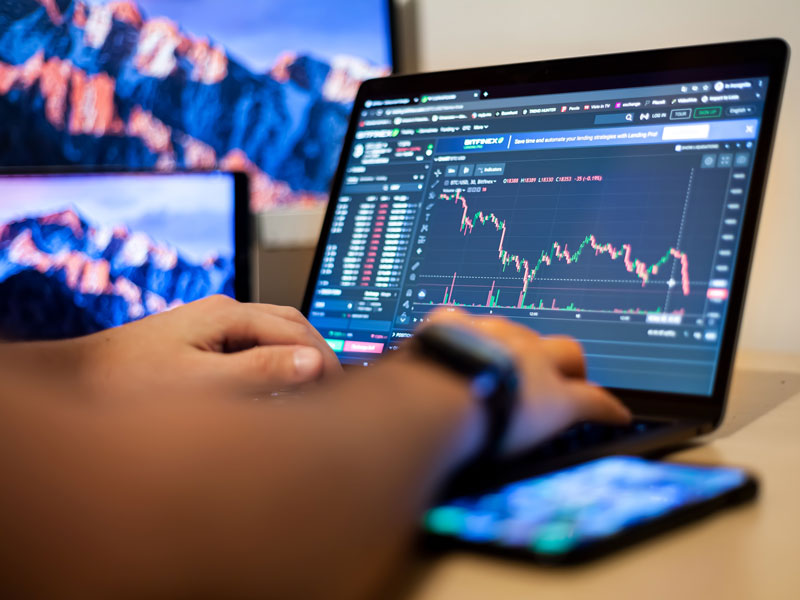
Understanding Margin in Forex Trading
In the world of forex (foreign exchange) trading, margin plays a critical role in how traders execute their trades and manage their accounts. Simply put, margin is the capital required to open and maintain a leveraged position in the market. To get a better understanding of this concept, let’s explore what margin is, how it works, and why it’s important for traders to grasp. For more insights into trading, you can visit what is margin in forex trading https://trading-connexion.com/.
What is Margin?
Margin can be defined as the amount of money that a trader must deposit with a broker in order to open a position. This amount is usually a fraction of the total trade size and is required to cover potential losses. Margin is not a fee; rather, it’s a part of a trader’s equity that is set aside to maintain the open position. Brokers often provide margin leveraging, which allows traders to control a larger position size with a smaller amount of capital upfront.
Types of Margin in Forex Trading
1. Initial Margin
The initial margin is the amount required to open a trading position. It is calculated based on the trade size and the leverage offered by the broker. For example, if a trader wishes to open a position worth $100,000 with a leverage of 100:1, the initial margin required would be $1,000.
2. Maintenance Margin

Maintenance margin is the minimum equity amount that must be maintained in the trader’s account to keep the position open. If the equity falls below this threshold due to adverse market movements, the broker may issue a margin call, requiring the trader to deposit more funds to restore the account balance.
3. Free Margin
Free margin refers to the amount of equity available in a trading account that can be used for opening new positions or as a buffer against market fluctuations. It is calculated by subtracting the margin used from the total equity in the account.
How Margin Works in Forex Trading
Margin trading allows investors to leverage their positions, which can amplify profits but also increase risks. When a trader uses margin, they effectively borrow money from the broker to control a larger position. The formula for calculating the margin required for a trade is: Margin = Trade Size / Leverage.
For instance, if you want to trade 1 lot (equivalent to 100,000 units of currency) at a leverage of 200:1, the margin required would be:
Margin = 100,000 / 200 = $500.
The Importance of Margin in Forex Trading

Understanding margin is vital for any trader because it impacts both potential gains and losses. Here are some key reasons why margin is important:
- Leverage: Margin allows traders to take larger positions than their account balance would typically allow by using leverage. This magnification of exposure can lead to higher profits on successful trades.
- Risk Management: Proper margin management can help traders safeguard their account from excessive losses. Knowing how much margin is required for each position can inform a trader’s decision-making process.
- Trading Strategy: Some strategies require specific margin levels. For example, scalping or day trading often needs a more precise understanding of margin requirements to manage trades efficiently.
Risks Associated with Margin Trading
While margin can enhance trading performance, it also comes with risks. Traders should be aware of the following potential pitfalls:
- Margin Calls: If the market moves against a trader’s position and the equity in the account falls below the maintenance margin, the broker may initiate a margin call, requiring the trader to deposit additional funds or close some positions.
- Increased Loss Potential: The use of leverage amplifies both profits and losses. A relatively small adverse movement in the market can lead to significant losses that exceed the initial investment.
- Overleveraging: Traders may be tempted to take larger positions than they can afford. This behavior can lead to rapid losses and, in extreme cases, the total depletion of the trading account.
Margin Levels and Broker Requirements
Margin requirements can vary significantly between brokers and can even change based on market conditions. Most brokers provide various leverage options, typically ranging from 50:1 to 500:1 or even higher. It’s crucial for traders to understand their broker’s margin policies, as trading on high leverage increases risk.
Conclusion
In summary, margin is a fundamental aspect of forex trading that traders must understand to effectively manage their risk and capitalize on market opportunities. By leveraging margin responsibly, traders can significantly enhance their trading potential while being mindful of the inherent risks involved. Always remember to set appropriate stop-loss orders, monitor your positions closely, and maintain sufficient free margin to avoid unexpected margin calls. Knowledge of margin trading can empower traders to make informed decisions and pursue their trading strategies with confidence.